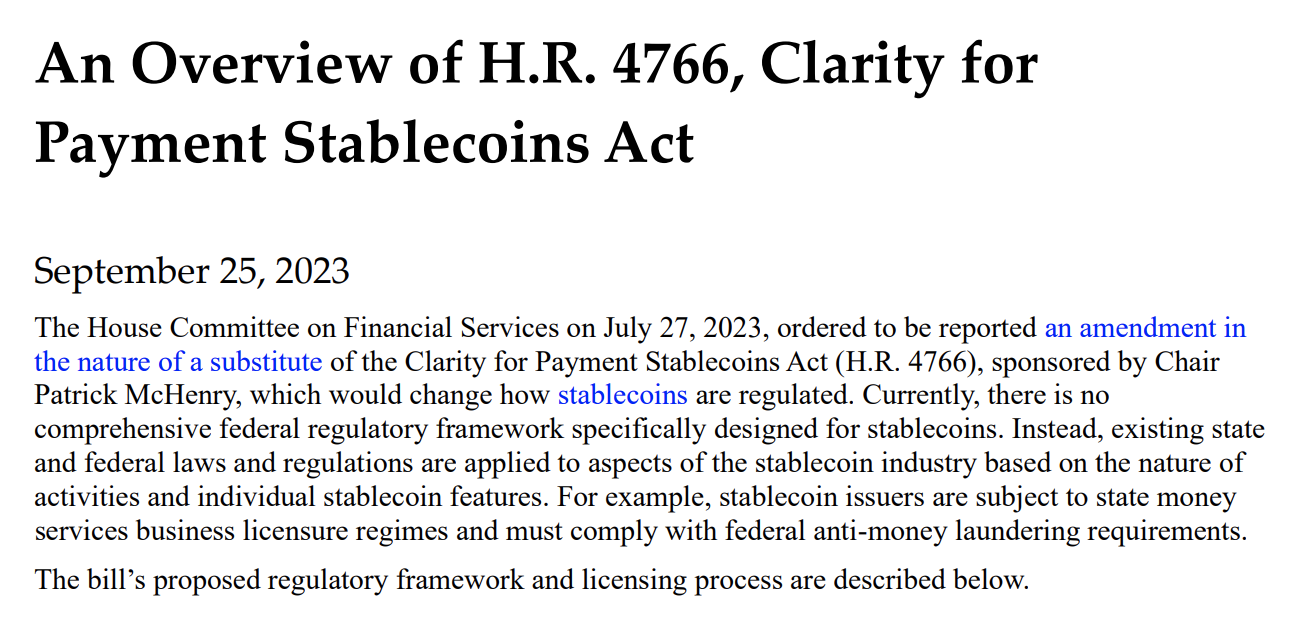Welcome to the 3 new people who joined the onchain letters community since Sunday!
I'm thankful for all 43 of you and I hope everyone is having a great week 🔥
If you're enjoying my writing, please share Onchain Letters with your friends in Crypto 🤝
Key Takeaways:
People and businesses outside of America have wanted to interact with USD without American regulation since the 1950s.
There are parallels between the Eurodollar and Stablecoin markets. As with the case of Eurodollars, American regulators will have no choice but to accept & embrace stablecoins.
It can be tough for the U.S. to understand the importance of stablecoins for the rest of the world. This is one of the few technologies that makes sense to everyone else first, then Americans.
A letter to Nic Carter:
For as long as I've been in crypto, I thought I understood stablecoins. I mean...pretty simple right? Assets on the blockchain pegged to the US dollar's value.
And yes, that is true. But stablecoins never truly clicked for me as it may have for someone in another country who previously struggled to transact in dollars.
You're probably thinking, what the heck YB? How did you not realize that stablecoins are crypto's "killer use case". Well, to me they seemed like the most boring application. This is likely because I was fortunate enough to grow up with a family that had access to reliable American banking. And for a lot of my life, the biggest frustration was Chase customer service, not hyperinflation.
Naturally, I had an indifference towards Tether and an excitement to buy into 10k pfp projects or pitch in to win the constitution. But now, I'm seeing a revived interest in stablecoins from a lot of friends in the space. So, I decided to go down the stablecoin rabbithole.
What's been most interesting to me so far was this talk that Nic Carter gave at Token2049 in Singapore a few months ago where he compares stablecoins to the Eurodollar.
Today's letter will have three sections:
Meet stablecoin's dad: Eurodollar
Like father, Like son
Phases of acceptance
Meet stablecoin's dad: Eurodollar
A Eurodollar is a US dollar that is deposited in a bank outside of the U.S. jurisdiction (i.e. Federal Reserve).
The reason there was even a need for the Eurodollar when it started was because of the cold war. The Soviet Union was worried that the U.S. would freeze its dollar deposits because of geopolitical tensions. So, they started moving their dollar cash reserves from American to European banks.
Around this time, the Marshall Plan also went live. This was the US initiative to provide $13.3 billion of foreign aid to rebuild western Europe after WW2. Many of the institutions that received this cash didn't want to deposit into U.S. banks so they looked for options closer to home.
This was the start of the "eurocurrency" market. Though the concept started off with USD, it's worth noting that eurocurrency refers to any currency that is held in a bank not of its origin.
Initially, as expected, the Federal Reserve was worried that there was a new market based on the dollar that they didn't have regulatory control over. It was the first time there was a partition between the asset and the regulator.

And what's one of the primary factors of international influence? Monetary oversight. With the eurodollar markets, European and Asian countries would be able to conduct business in USD without direct involvement from American authorities.
But the truth is, there's not much the U.S. could do except realize that overtime they would have to take a pragmatic stance and accept that the Eurodollar had found product market fit and was a crucial market for international businesses and governments.
Lose analogy but it's like when a child turns 18 and goes off to college and makes their own decisions. The parents aren't used to it initially but over time have no choice but to embrace and accept.
Okay, so why is this relevant?
Because the American government's reaction to the Eurodollar has an uncanny resemblance to the way they're treating stablecoins today.
Like father, Like son
Now, let's go back a decade and discuss the origins of Stablecoins.
The story starts in 2013 when J.R. Willett announced the Mastercoin whitepaper and executed the first ever ICO. Mastercoin protocol proposed a layer on top of Bitcoin that could be used to create other tokens. Willett even gave the analogy: "like how HTTP runs on top of TCP/IP".
This protocol, later rebranded to Omni, became the foundation for making stablecoins possible.
Then, in July 2014, Brock Pierce, Craig Sellars, & Reeve Collins launched RealCoin which was the first ever stablecoin: an asset on the blockchain pegged to the USD. A few months later, the team rebranded to Tether.
Up until then, the idea of Bitcoin was still not taken seriously as innovation that "would disrupt the financial system". So when stablecoins were first launched it was just grouped in with the nascent cryptocurrency market as another nerd project.
However, it wasn't until 2015 that Tether really took off and caught the US banks and regulators off guard. Why? Because the Hong Kong based exchange Bitfinex embraced Tether with open arms and closely integrated the new stablecoin into their operations.
"Stablecoins were first created because Bitfinex was having trouble banking. They were having trouble settling dollar transactions with their clients. [Bitfinex] doesn't want to do bank wires every time they want to settle up a transaction with exchange clients. Let's just deal with the banking system once and then deal with the dollar assets onchain." - Nic Carter
The first real use case of stablecoins was for an exchange located outside of America that wanted to interact with US dollars without the oversight and control of American authorities.
Bitfinex was worried that American banks could halt their transactions at anytime and kill their business model. Stablecoins were a no brainer.
And since then, for the last 8 years, the US regulators have been playing catch up with the stablecoin market. How can we shut this down? How can we regulate this?
Financial innovation outpaces regulation.
Regardless of what regulators think, one thing is clear: just like the Eurodollar, stablecoins have found product market fit.

Note: Nic says in his talk that stablecoins were first created because of Bitfinex. I'm not sure if it can be 100% attributed to them. But regardless, Bitfinex was easily the most important part of Tether's growth in the origin story.
Phases of acceptance
For the most part, Americans are used to being at the frontier of innovation. Most new world changing products are first adopted in the U.S. and then proliferate out to the rest of the world.
This is great but also a double edged sword.
Because the moment a technology comes that doesn't make sense to us but is a huge win for the rest of the world, Americans (regulators) tend to look down upon it.
Just as with the Eurodollar, stablecoins didn't entirely click for Americans. We have access to USD. We have to follow American law. And we are accustomed to transacting in dollars.
The point I'm trying to dive home here is that whether American regulators like it or not, stablecoins are here to stay. In this bear market, the 70%+ of onchain transactions were stablecoin activity.
And for a good chunk of 2023, American regulators showed their fear of stablecoins to the rest of the world. Countries like Honk Kong and Singapore were quick to notice and successfully ate some of the market share.
It would be most beneficial for the U.S. government to embrace stablecoins with open arms so that the next wave of innovation in the stablecoin market remains onshore (in America).

It's worth noting that finally at the end of 2023, regulators gave some clarity around stablecoins through H.R. 4766. Also, 2024 is an election year and the BTC ETF just passed yesterday. Maybe this is the year that things finally start turning around?
It's definitely looking promising.

In tomorrow's letter, I'll be sharing metrics and pretty graphs to help understand where the stablecoin market is today. We'll also discuss more about the battle between the two dominant players: Tether & Circle.
That's all for today's letter!
If you made it this far and thought the analysis was interesting, it would mean a lot if you can share with a friend who you think will enjoy 🙂
- YB

